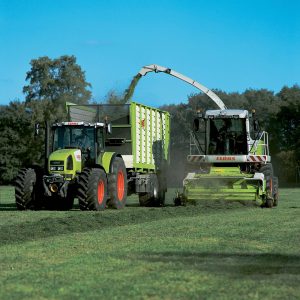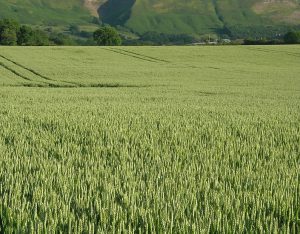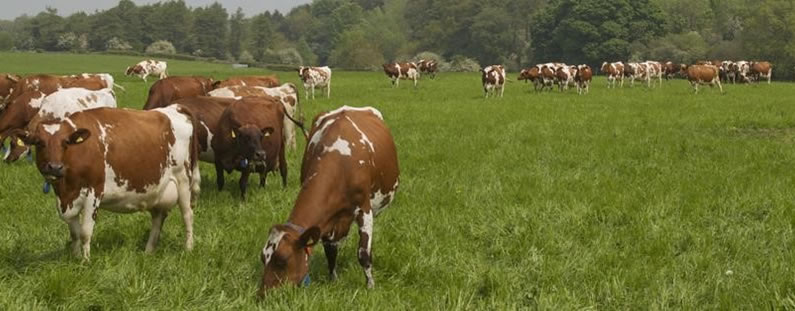Download pdf: Sulphur as a nutrient for crops and grass (2.21M)
pdf 2.21M
Sulphur as a nutrient for crops and grass
September 2017
Introduction
Sulphur is an essential nutrient for all plants, and certain crops are more vulnerable to deficiency than others.
Historically, in the UK sulphur was deposited on land from the atmosphere in quantities which were adequate for our crops. However, as the burning of UK coal (high S) in power stations was switched to imported coal (low S) and natural gas, aerial deposition declined dramatically. This continued when emissions regulations forced flue gas desulphurisation units to be fitted, and now very little sulphur lands on our fields. As a result, applications of sulphur to crops has become an essential part of Nutrient Management Planning on farms.
 This article will run through the relevant aspects of sulphur as a plant nutrient. Firstly, it will cover its presence in the soil, then its role in the plant, and finally how it is applied.
This article will run through the relevant aspects of sulphur as a plant nutrient. Firstly, it will cover its presence in the soil, then its role in the plant, and finally how it is applied.
Sulphur in the Soil
Sulphur in the soil acts in a similar way to nitrogen. It arises naturally from the breakdown of organic matter, and to some extent from soil minerals. Soils which are organic, or heavy textured are more able to supply adequate sulphur than light and inorganic soils.
The organic sulphur compounds are broken down to inorganic forms, which are then useful to the plant. The Sulphur Cycle demonstrates these processes which are driven by microbial action, so moisture, warmth and time are required.
Organic sulphur in the soil comes from organic matter, whether from applied organic materials or from grazing/crop residues. The organic sulphur has to be “mineralised” into the sulphate ion (SO42-) in order to be taken up by plants. These sulphate ions reside in the soil solution which means they are liable to be leached, depending on the soil texture and rainfall, just like nitrates. This risk must be taken into account when nutrient planning, which will be covered later.
Immediately available sulphur in the soil can be measured by lab analysis, but its variability both down the soil profile and over time, means that the normal 4 yearly soil analysis (pH, P, K, Mg) regime is not appropriate. Both the organic processes and the leaching potential cause levels to vary by month, and by year. Some research work has been done by measuring sulphur in deep core samples taken for soil mineral nitrogen testing in oilseed rape crops. However clear conclusions on guide levels are still being determined.
Sulphur in the Plant
 The major role of sulphur in all plants is in support of nitrogen in protein production which is hugely important for high crop yields. For breadmaking wheat, protein production and its quality are even more important for loaf volume. In brassicas, (veg, oilseed rape, kale etc) sulphur is also in glucosinolate compounds, which give them their hot taste. Sulphur also reduces the likelihood of immature rapeseed which faces penalty pricing in the market. This explains the greater requirement and importance of sulphur applications to brassicas. In grass, sulphur is probably more important for improving the quality of grazing and silage, in terms of protein, than the yield increase achieved.
The major role of sulphur in all plants is in support of nitrogen in protein production which is hugely important for high crop yields. For breadmaking wheat, protein production and its quality are even more important for loaf volume. In brassicas, (veg, oilseed rape, kale etc) sulphur is also in glucosinolate compounds, which give them their hot taste. Sulphur also reduces the likelihood of immature rapeseed which faces penalty pricing in the market. This explains the greater requirement and importance of sulphur applications to brassicas. In grass, sulphur is probably more important for improving the quality of grazing and silage, in terms of protein, than the yield increase achieved.
Deficiency symptoms in cereals, grass and brassicas show up in the younger leaves first. Symptoms are a pale yellow appearance (chlorosis) and, later on, stunting. Much later, OSR flowers will have pale yellow, or almost white, petals. Symptoms in some crops are easily missed, or confused with nitrogen deficiency, and may not be noticed at all, especially in cereals and grass.
Because our routine soil analysis can not be used to predict sulphur deficiency, plant tissue testing is often used. For OSR and cereals there is the Malate Sulphate test which can be done early in the crop’s life, but it may need to be repeated later at stem extension.
Alternatively plant tissue analysis, for N and S concentrations, can be carried out for OSR and other crops, but the results may not become available until too late to correct for the current crop. However, it should give good indications for future policy.
The following values are a guide for interpreting tissue analysis:-
Cereals (at stem extension): Total S less than 0.2% in the dry matter, or an N:S ratio greater than 15:1 indicates deficiency.
Grain analysis: An N:S ratio of more than 16:1 indicates deficiency and difficulty with milling quality.
OSR (at early flowering): Total S less than 0.4% in the dry matter, or an N:S ratio of more than 10:1 indicates deficiency.
Grass (at 50% ear emergence): Total S less than 0.25% in the dry matter, or an N:S ratio of more than 13:1 indicates deficiency.
Application of Sulphur
The Nutrient Management Guide (RB209) provides a helpful risk table to determine the likely need for sulphur applications, based on soil type and rainfall. In short, sulphur should be applied to most winter OSR crops, milling wheats and multi cut grass silage, grown on mineral soils. For other situations, heavier and organic soils are less likely to need sulphur, and lighter soils and high rainfall areas are more likely to need it.
For nutrient purposes, the crop requirement for sulphur and the concentration of crop-available sulphur in materials, is expressed as kg SO3/ha and % SO3 respectively. Occasionally they are quoted as kg S/ha and % S, in which case conversion to SO3 is achieved by multiplying by 2.5.
Recommendations are only guides due to the variable nature of crop-available sulphur coming from soils for plant uptake. Where sulphur is needed, the quantities to be applied and timings are as shown below:-
Cereals: 25-50 kg SO3/ha in March or April (usually with the first N top dressing).
OSR: 50-75 kg SO3/ha in early March (usually with the first N top dressing).
Peas and Sugar Beet: 25 kg SO3/ha in Spring.
Potatoes: 25 kg SO3/ha in the seedbed
Grass for Silage: 40 kg SO3/ha prior to each cut. NB. 2nd and subsequent cuts are the most sensitive.
Grass for Grazing: 20-30 kg SO3/ha in Spring and again mid season.
Sources of Sulphur for Application
Both fertilisers and organic materials can be used to supply sulphur to the crop.
Firstly, sulphur in organic materials:-
Solid organic materials, such as farmyard manure and biosolids contain significant amounts of sulphur, but are slow release, because the organic sulphur has to be mineralised to sulphate so the plant can take it up. This takes several months and warmth, so they need to be applied in the autumn, despite a small amount potentially being lost through leaching of the sulphate over the winter.
Liquid organic materials, such as slurries, and poultry manure supply available sulphur much more quickly. They should be applied early in the year because autumn applications are very susceptible to leaching of the sulphate over the winter.
The PDA leaflet on Organic Materials has a table showing the crop-available sulphur of various materials, according to the season of application. This is the sulphur you can expect to be supplied to the crop in the growing season and can therefore be included in the nutrient plan for the crop.
Secondly, application of concentrated fertilisers:-
Fertilisers with the sulphur in the sulphate form are readily soluble and rapid acting. They are applied early in the growing season, often with the first N top dressing. They are typically: N-S compounds (usually containing ammonium sulphate), sulphate of potash, kieserite, and gypsum (calcium sulphate). Gypsum is slower to dissolve and takes slightly longer to act, especially if it is very coarsely ground.
Elemental sulphur fertilisers need to convert to the sulphate form to become crop-available. These need more time to be effective and must be applied well in advance, such as the previous autumn. There is an inevitable risk that a significant amount of the sulphur is mineralised to sulphate in the autumn and this may be lost by leaching, over the winter.
Polyhalite (e.g. Polysulphate) is a new potash/magnesium/sulphur fertiliser now available in increasing quantities. It is a complex sulphate molecule, with progressive release characteristics. It is applied either as a straight fertiliser or incorporated in compound fertilisers.
Conclusion
As potash is so essential in support of crop growth, for yield and sometimes quality, so is sulphur essential to the crop. It is an unfortunate fact that as the atmosphere has been cleaned up, we must now apply sulphur to so many of our crops!


